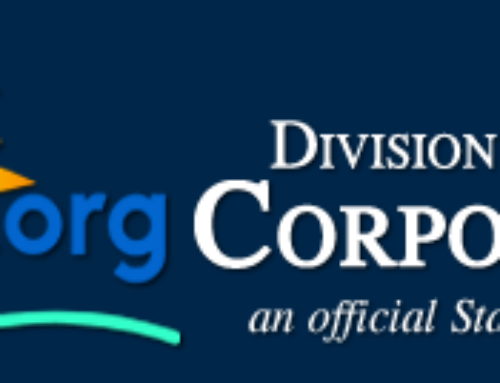COVID-Related Tax Relief Acts
On December 23, 2020, Congress passed the $900 Billion COVID-Related Tax Relief Act of 2020 (“COVIDTRA” or “the Act”) as part of the Consolidated Appropriations Act of 2021, on December 21, 2020. COVIDTRA extends and modifies several provisions first enacted in the Coronavirus Aid, Relief, and Economic Security Act, as amended (“CARES Act”), Congress’ $2.2 trillion pandemic relief act that was passed in March 2020.
Below is a summary of the CARES Act, FFCRA, SECURE Act, and Tax Relief Act, all passed during 2020. The COVIDTRA changed some of the rules originally in place in those laws. For the full list of COVIDTRA impacts, we recommend this article; https://www.jdsupra.com/legalnews/covid-related-tax-relief-act-summary-49412/.
The full article below can be found here: https://www.cpapracticeadvisor.com/tax-compliance/news/21160895/key-tax-law-changes-for-tax-year-2020
Please note: We have added strikethroughs to the article to reflect information that has changed with the new COVIDTRA and added text in RED to reflect important additional information from the COVIDTRA.
This past year has been a busy one on the tax legislation front with the following tax bills passed by Congress: Coronavirus Aid, Relief and Economic Security (CARES) Act; Families First Coronavirus Response Act; Setting Every Community Up for Retirement Enhancement (SECURE) Act; and the Taxpayer Certainty and Disaster Tax Relief Act of 2019.
The below gives a review of the higher impact tax law changes and tax form changes, and what they mean for the tax year 2020 filing season to ensure accurate preparation of tax returns.
Economic Impact Payments
The CARES Act provided Economic Impact Payments (EIPs) to taxpayers based on the following table:

Taxpayers also received a $500 EIP for each qualifying child, and the IRS issued Notice 1444 within 15 days after the EIP was sent out, showing how the payment was made. The payment is not includible in gross income, and will not reduce a refund or increase the amount owed.
Taxpayers who didn’t get some or all of the EIP they were entitled to will be able to claim the difference as a Recovery Rebate Credit on their 2020 tax return. According to the IRS, there is no provision in the law that would require individuals who qualify for a Payment based on their 2018 or 2019 tax returns, to pay back all or part of the payment, if based on the information reported on their 2020 tax returns, they no longer qualify for that amount or would qualify for a lesser amount.
Additionally, Direct Payments to Individuals (Relief Rebates): COVIDTRA contains a second round of direct payments to individuals, modeled after the Recovery Rebates sent out as part of the CARES Act, but with important changes. The Relief Rebates provide a refundable tax credit of up to $600 (as of now, though a much higher figure is being bandied about by the President and Speaker of the House) per individual and qualified child, with no cap on household size.
Paycheck Protection Program Loans
The Paycheck Protection Program (PPP) provides low-interest loans to eligible small business owners and other eligible businesses (including nonprofits) to cover payroll and other expenses (mortgage interest, rent, and utilities) for a 24-week period. The Small Business Administration may forgive these loans, in whole or in part, if PPP funds are spent on eligible expenses during the Loan Forgiveness Covered Period. Lenders are responsible for determining loan forgiveness eligibility.
For tax purposes, loan forgiveness amounts are excluded from gross income, but forgiven expenses are not deductible (IRS Notice 2020-32). Lenders are not supposed to file and report forgiven amounts on Form 1099-C, Cancellation of Debt (Announcement 2020-12).
COVIDTRA allows the Treasury Department to waive reporting any amount excluded from income by (i) a covered loan amount forgiveness, (ii) an emergency financial aid grant forgiveness, or (iii) other business financial assistance under the CARES Act. Expenses paid for wiht the PPP will be deductible and the forgiveness not taxable.
Forms 1099-MISC and 1099-NEC
To reduce confusion around filing deadlines, Form 1099-MISC (Miscellaneous Income) has been redesigned, and Form 1099-NEC for reporting nonemployee compensation has been reintroduced in tax year 2020. Prior to the change, non-employee compensation on Form 1099-MISC, box 7, needed to be filed with the IRS by Jan. 31, and all other payments on Form 1099-MISC needed to be filed with the IRS by Feb. 28 for paper filers (March 31 for electronic filers).
Beginning in tax year 2020, Form 1099-NEC (Nonemployee Compensation) must be filed with the IRS by Feb. 1, and Form 1099-MISC must be filed with the IRS by March 1 if filing on paper (March 31 if filing electronically). Both Forms 1099-MISC & 1099-NEC must be furnished to the recipient by Feb. 1. Payments of more than $600 in nonemployee compensation, including independent contractors, attorneys, and golden parachute payments, will be reported on Form 1099-NEC, box 1.
Charitable contributions
The CARES Act makes the following changes to charitable contributions beginning in tax year 2020:
- A $300 above-the-line charitable contribution deduction is now available for taxpayers who don’t itemize deductions.
- The 60% adjusted gross income (AGI) limit on cash contributions by individuals is disregarded.
- For corporations, the taxable income limit is increased from 10% to 25% on cash charitable contributions.
- The taxable income limit on contributions of food inventory is increased from 15% to 25%.
The above-the-line charitable contribution deduction is extended through 2021 at $300 for most filers ($600 for married filing jointly).
Kiddie tax changes
Prior to the Tax Cuts and Jobs Act (TCJA), the net unearned income of a child under 19 years old (or a full-time student under 24) was taxed at the parent’s tax rates, if the parent’s rates were higher than the child’s rates. For tax years beginning after 2017, the TCJA changed the rule so that the unearned income of the child would be taxed at trust and estate tax rates.
However, this change seemed to unfairly increase the tax on certain children. Effective for tax years beginning after Dec. 31, 2019, the SECURE Act repeals TCJA rules, and you may elect to apply the pre-TCJA rules in 2018 and 2019. Also, a child’s earned income is taxed at single rates and this has not changed.
Required minimum distribution age raised from 70½ to 72
Prior to 2020, participants in employer-sponsored retirement plans (for example, 401(k) plans), traditional IRAs, and individual retirement annuities needed to begin taking required minimum distributions (RMDs) from their plans by April 1 of the year following the year they turned 70½ years old.
Under the SECURE Act and for distributions required to be made after Dec. 31, 2019, the age at which individuals must start taking distributions from these retirement plans has been increased from 70½ to 72. The RMD rules try to get taxpayers to spend retirement savings during their lifetimes instead of transferring wealth to beneficiaries.
Please note: Under the CARES Act, RMDs are not required for 2020. Initially, the provision stated that you may return an RMD within 60 days if you had already taken the distribution. Notice 2020-51 allows you to return the distribution by Aug. 31, 2020.
Retirement plan distributions
Under the CARES Act and for 2020 distributions from IRAs and workplace retirement plans, if the taxpayer is impacted by COVID-19, they can take a distribution up to $100,000 and not be subjected to the 10% early withdrawal penalty. The distribution can be included in income ratably over a 3-year period unless the taxpayer elects otherwise. The taxpayer can also contribute the money back to their retirement plan within three years and treat the transaction as a direct rollover.
Retirement plan loans
Under the CARES Act and for taxpayers affected by COVID-19, loans from a qualified plan on or after March 27, 2020, and before Sept. 23, 2020, may be made up to the lesser of $100,000 (instead of $50,000) minus loans you have outstanding, or 100% of your non-forfeitable account balance or accrued benefit.
The taxpayer has up to six years (instead of five) to repay the loan. Amounts in IRAs are eligible for COVID-19-related distributions, but you can’t take a loan from an IRA.
For new and existing loans, plans can also suspend loan repayments due between March 27, 2020, and Dec. 31, 2020, for up to one year. Typically, at least those repayments originally scheduled for 2021 must resume in January 2021.
Repeal of maximum age for traditional IRA contributions
Under the SECURE Act and for contributions made for tax years beginning after 2019, individuals of ANY AGE can make contributions to a traditional IRA, assuming there is enough compensation. Prior to this rule change, taxpayers were not allowed to make an IRA contribution once they reached age 70½ by the close of the year. The rationale for the rule change is that Americans are living longer, and many are continuing to work past 70½ years old. The restriction didn’t apply to Roth IRA contributions.
For qualified charitable distributions (QCDs) made after 2019, the taxpayer’s QCD is reduced by the excess of the total amount of IRA deductions allowed after reaching age 70½, over the aggregate amount of reductions in prior years.
Penalty-free retirement plan withdrawals for births and adoptions
In general, retirement plan distributions are included in income, and unless an exception applies, distributions before the recipient turns 59½ years old are subject to a 10% early withdrawal penalty. Under the SECURE Act and beginning in 2020, taxpayers can take up to $5,000 (for each spouse) of penalty-free retirement plan distributions for expenses related to the birth or adoption of a child.
Extender provisions
On Dec. 19, 2019, Congress passed the Taxpayer Certainty and Disaster Tax Relief Act of 2019, which extends more than 30 tax code provisions. These measures will expire at the end of 2020 unless further extended.
Higher-impact extender items:
- Exclusion from gross income for discharge of debt income from qualified principal residence debt (expired after 2017, retroactively extended through 2020).
- Deduction for mortgage insurance premiums (expired after 2017, retroactively extended through 2020).
- Tuition and fees deduction for higher education (expired after 2017, retroactively extended through 2020).
- Nonbusiness energy property credit (expired after 2017, retroactively extended through 2020).
- Medical expense deduction subject to 7.5% adjusted gross income threshold, instead of 10% (expired after 2018, extended for 2019 & 2020).
Disaster relief
The Taxpayer Certainty and Disaster Tax Relief Act of 2019 also gives the following relief to taxpayers impacted by disasters in 2018 through 30 days after enactment:
- An automatic 60-day extension when filing a tax return.
- Suspends limits on charitable contributions.
- Personal casualties do not have to exceed 10% of AGI, and the taxpayer doesn’t have to itemize deductions to claim the loss.
- Can utilize earned income from the prior year when computing the earned income credit and child tax credit.
IRS products now in Spanish
- Form 1040
- Form 1040-SR (for seniors)
- Instructions for Forms 1040 and 1040-SR
- Schedules 1, 2, and 3
Additional products will be translated into Spanish and other languages as resources allow. Schedule LEP, Request for Change in Language Preference, is for Limited English Proficiency filers, and allows for individuals to indicate a preference for communications in a language other than English. The IRS will only send communications (such as a notice) in the preferred language if the communication has been translated. A copy of the communication in English will also be provided.



